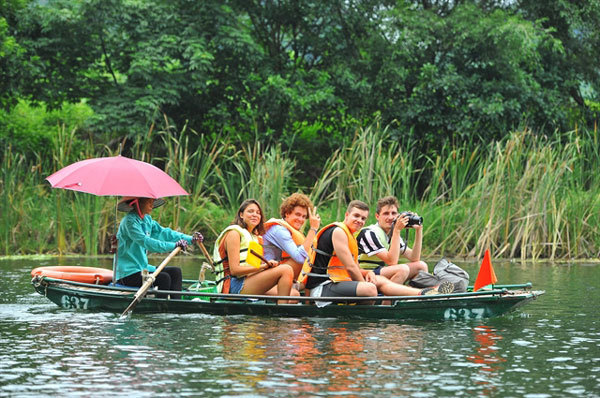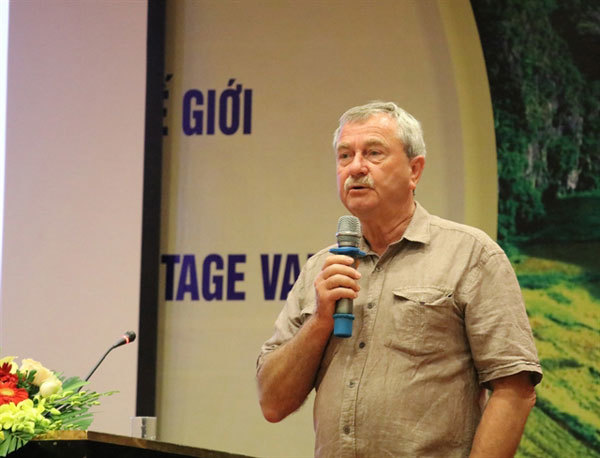At the seminar, the participants heard presentations and speeches by international experts and world heritage managers on heritage value protection and development in different countries.
Many world heritage sites are witnessing an increase in tourists, said Now Yahashi, a heritage management expert from the United Nations Educational, Scientific and Cultural Organisation (UNESCO)’s World Heritage Centre.
 |
However, visitors bring benefits to the local community, making remarkable contributions to socio-economic development, job creation and improvement of the surrounding natural environment, she said.
But developing a tourism economy must ensure sustainability and a balance between development and conservation.
People have to quantify the capacity to welcome visitors set up by the World Conservation Union. There needs to be accurate analysis of the responsiveness of heritage; defining acceptable changes, giving a warning index thereby managing the heritage scientifically, she added.
The experts appreciate the co-operation between Việt Nam and the UNESCO in conducting periodic inspections and evaluation reports on environmental conservation activities.
Human resource management and the promotion of research to make appropriate adjustments meeting the demand of UNESCO's requirement are also noted at the workshop.
At the seminar, the experts also recommend that in the heritage management process, the core and buffer zone should be respected, making people understand what to do and not to do when living in the heritage according to the provisions and instructions of UNESCO and comply with the delimitation of heritage boundaries to ensure the integrity and authenticity of the heritage.
The participants also discussed how to develop tourism without affecting the heritage, while ensuring active coordination from people is the problem posed in the management of world heritage sites.
 |
Expert Clark Brian Dextor from the International Union For Conservation of Nature took an example of some tourism spots in Australia.
He said that it is necessary to find the expectations of tourists when visiting the heritage, from which suitable tourism products can be derived.
Through analysis and research it can be seen that tourists want to learn about the value of the heritage, not just visiting it. So there must be more forms of tourism to promote the heritage as well as the living experiment with local people, according to Dextor.
Diversifying specialities is a way to attract tourists and reduce negative impacts on the heritage, he added.
Trang An Complex, the natural and cultural heritage recognised by UNESCO, has seen progress in management and preservation activities, according to the Ninh Binh Province’s report.
Stone mountain and the special-use forest system; ecological system and cultural and historic relic sites are protected thanks to the community’s awareness of heritage preservation, the report said.
Infrastructure was also a hot topic. Many agreed that construction is permitted but it must follow principles based on scientific and archaeological research.
VNS
 Vietnamese and international scientists and experts discussed the management, conservation and promotion of world heritage values at a seminar held in Ninh Binh Province recently.
Vietnamese and international scientists and experts discussed the management, conservation and promotion of world heritage values at a seminar held in Ninh Binh Province recently.